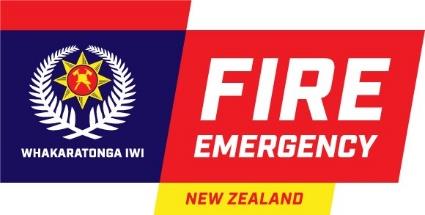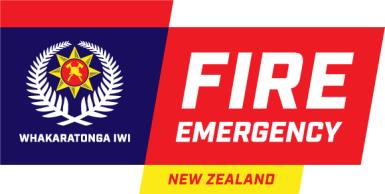
 Fire and Emergency New Zealand
Fire and Emergency New Zealand
Wellington District
Kilbirnie Fire Station
161 Rongotai Road
Wellington 6022
PO Box 19161, Marion Square, Wellington 6141
Email
: [email address] Mobile: 9(2)a
29 July 2023
Wellington City Council
City Design Team – Brooklyn Road
Thank you for meeting with Fire and Emergency NZ yesterday to explain the proposed Brooklyn Road
cycleway changes and receive some feedback. As suggested, we are formalising that feedback following
the meeting and will also be happy to attend the feedback meeting planned to provide any further
information. Could you please advise me of the time and location of that meeting. I also wish to note
that there has been good engagement between the WCC and FENZ over these proposals, for which I
thank you, however many of our requests for changes have not been accepted by the WCC and we are
concerned at the potential increase in emergency response times around the city as a result.
Feedback specifically relating to the Brooklyn Road proposal is below. Please note that I have referred
to the set of plans you provided me at the meeting:
Context
1. Fire and Emergency operate a 24/7 emergency response service from the Brooklyn Fire Station
on Cleveland Road and respond to emergencies 3-4 times daily along Brooklyn Road. Other
appliances respond 4–5 times per week from the city to Brooklyn heading up Brooklyn
Road. These responses are almost exclusively made by heavy type 3 (large) pumping appliances
and occasionally by type 4 and 5 heavy aerial appliances and a larger command unit. These
responses are time critical and in some cases people’s lives can be in imminent danger. FENZ
also provides co-response services for all cardiac and respiratory arrest calls in support of
Wellington Free Ambulance, which are medical emergencies. Literally, seconds count at these
types of emergencies.
2. The proposed changes to Brooklyn Road will slow down some of these emergency
responses. This assertion is made given our recent experiences with similar changes in other
parts of the city and calling upon the vast experience of our emergency response drivers
operating out of the Brooklyn station.
Problems with proposal
under the Official Information Act 1982
1. There are four raised crossings/speed inhibitors along Brooklyn Road. These will require FENZ
appliances to slow down considerably (or stop) when crossing these raised areas. Appliances
travelling in both directions will be affected, however those travelling up the Brooklyn hill will be
worst impacted due to the time it takes to accelerate and regain speed whilst travelling up a
steep hill.
2. 600mm concrete separators are (again) being used to separate the cycle lane from the
roadway. These do not allow for cars to pull to the left (temporarily sharing the cycleway) to
make way for emergency vehicles which effectively means that we can only travel as fast as the
slowest car in front of us. It also does not allow for our vehicles to pull to the left if attending an
Released
emergency adjacent to the barriers (We have to block the only lane available for traffic) and
they use road width which could be used to assist in easier traffic flow and assist safer fire
appliance responses. At times we need to be able to locate aerial appliances and other
equipment adjacent to the kerb/footpath to get the required reach with the aerial
device/ladders. The concrete separators are preventing us from achieving that.
3. Bus stop being placed in a position to block traffic using the lane (sheet 5). During peak traffic
hours we believe this will cause congestion and will considerably slow down traffic heading up
the hill. We have noted in other areas that the congestion can occur some distance from the
source, so could have an impact along the entire stretch of Brooklyn Road. With the concrete
separators in place, fire appliances will be delayed trying to get past traffic, even remotely from
that bus stop.
4. Bus stop being placed in a position to block traffic lane opposite Washington Ave (sheet
7). Same issue as point 3 above but made more difficult with a proposed concrete median
island nearby. During congestion, this blockage will also complicate the situation above.
FENZ recommendations
1. That the crossings proposed on Brooklyn Road are not raised, but flat, allowing fire appliances to
travel on the road unimpeded.
2. That the 600mm concrete separators are replaced with the rubber separators (as shown on
sheet 1) OR the concrete separators are constructed to the same profile as the rubber
separators. This will solve the issues listed in (2) above.
3. Bus stops are placed in positions where they will not impede traffic travelling in the same
direction.
4. The concrete island proposed in sheet 7 is removed.
5. That in all places along the road, although there may be two lanes marked, that there is the
width of 3 lanes available for vehicular traffic.
Thank you for the opportunity to make this submission. I am more than happy to provide additional
information relating to our operational requirement and our experience with the roading changes to
date.
Yours faithfully
9(2)aunder the Official Information Act 1982
Michael Dombroski
Assistant Commander
Kaiwhakahaere Rōpū, Rongotai
Wellington District
Released
2




6 October 2023
Ref: Feedback on Berhampore Newtown Transport Project
Fire and Emergency New Zealand (Fire and Emergency) supports measures to improve safety for cyclists and other
vulnerable road users and seeks to work with Wellington City Council (WCC) to ensure that measures do not negatively
impact our ability to respond in a timely manner to emergencies. Fire and Emergency wishes to acknowledge and thank WCC
for taking the time to meet and discuss concerns relating to this project on 27 September 2023.
The primary objective of Fire and Emergency is to reduce the incidence of unwanted fire and the associated risk to life and
property.
The main functions of Fire and Emergency are to:
● promote safety and provide fire prevention response and fire suppression services,
● stabilise or render safety incidents involving hazardous substances,
● rescue persons who are trapped as a result of transport accidents or other incidents, and
● provide urban search and rescues services.1
Through a Memorandum of Understanding2 with St John, Fire and Emergency also responds to medical emergencies. We
provide:
● co-response to all immediate or life-threatening calls,
● first response to:
– immediate or life-threatening calls,
– potentially life threatening or time-critical calls, and
– urgent or potentially serious calls.
An efficient road network is crucial to emergency response
The road network is the primary mode of emergency response for Fire and Emergency across Wellington City. Impediments in
attending a fire or other emergencies may risk the safety of people, property, and the environment and increase the risk of
death or serious injury within our communities.
Community need for our services has been increasing, thereby increasing our presence on the roads and need for fast and
efficient traversing across Wellington City.
Responding to fire, medical and other emergencies is time critical and delays experienced by emergency response can affect
the outcome of incidents they attend.
under the Official Information Act 1982
● A house fire can become fatal within three minutes3
1 Fire and Emergency New Zealand Act 2017 Section 11
2 Fire and Emergency New Zealand and St John New Zealand, Interagency Support Memorandum of Understanding 28 September 2020
3 www.fireandemergency.co.nz
Released
● For every minute that goes by without cardiopulmonary resuscitation (CPR) or using an AED4, the chance of survival drops
by 10-15 percent.5
The cumulative effects of the cycleway could negatively impact emergency response times
Fire and Emergency recognises the positive effects of better providing for cyclists in Newtown and Berhampore. However, in
reallocating street space for pedestrians and cyclists, care must be given to avoid unintended consequences on Fire and
Emergency’s ability to respond to emergency events. In some cases, the provision of cycleways on key emergency response
routes and incorporation of cycle lane separators may inadvertently block or significant slow down a route used by Fire and
Emergency. If an emergency appliance needs to park on a road, this can mean the street / road is blocked to all other traffic
including other emergency vehicles that may need to get past.
Fire and Emergency’s specific feedback is:
• The cycle lane separators proposed along Rintoul Street, Adelaide Road, and Luxford Street are likely to prevent cars
from pulling to the left to make way for emergency vehicles. Additionally, the separators prevent emergency appliances
from pulling to the left when attending emergencies adjacent to the barriers. At times, Fire and Emergency needs to be
able to locate aerial appliances and other equipment adjacent to the kerb/footpath to get the required reach with aerial
devices/ladders.
• The removal of the carparks proposed between Wakefield Park and Berhampore Town Centre concerns Fire and
Emergency. Currently, these carparks are generally not fully utilised outside of peak hours during the weekend. By
removing the carparks and replacing them with a separated cycle lane, the ability for cars and / or emergency service
vehicles to pull into these areas will be permanently hindered.
• Fire appliances responding to emergencies are able to exceed the posted speed limit if necessary. For posted speed
limits of 30km/h fire appliances may travel up to 55km/h responding to emergencies. It is common for fire appliances to
travel faster than the posted speed limit, particularly along main arterial routes. These main arterial routes provide access
to residential suburbs from centrally located fire stations and back into the central city area from suburban fire stations.
Traffic calming devices as proposed for this project slow traffic down travelling along those routes. The direct effect of this
is the slowing down of fire appliances while travelling over the calming devices. Additionally, a “tail” of slow traffic which
extends some distance back from the calming devices can be created, including at intersections Fire and Emergency are
trying to pass through. These effects, combined with the inability of traffic to move to the left and give-way due to
cycleway separation, creates significant problems and delays for fire appliances responding to emergencies.
Fire and Emergency would like to work with WCC to ensure that the proposed cycleway does not negatively impact
emergency response times
Specifically:
• As an alternative method of cycle lane protection, Fire and Emergency would prefer the installation of a curved ‘hump’
that can be driven over without causing damage to either the vehicle or the road while still providing a visual and physical
separation between traffic and cyclists.
under the Official Information Act 1982
• Fire and Emergency understand that cars are allowed to pull into cycle lanes (when not physically prevented) and bus
lanes if they need to. As discussed at the meeting held between Fire and Emergency and WCC on the 27/09/2023,
greater education and public awareness of this would be beneficial.
• That raised traffic calming devices in any location along cycleway routes where vehicular traffic is not free to move over to
the curb and give way to fire appliances are avoided.
Released
4 Automated external defibril ator
5 https://www.stjohn.org.nz/news--info/news-articles/whats-your-chance-of-surviving-a-cardiac-arrest/
Page 2

• Fire and Emergency understands that vehicles are legally allowed to pull into cycle lanes (when not physically prevented)
and bus lanes if necessary to do so to let emergency vehicles past. As discussed at the meeting on 27 September 2023,
Fire and Emergency considers that greater education and public awareness of this would be beneficial.
Fire and Emergency would welcome the opportunity to work with WCC to assess the cumulative effects of the proposed
cycleway on emergency response times in an effort to mitigate negative community outcomes in event of fire, medical, road
accident or other emergencies.
Yours sincerely
9(2)(a)
Michael Dombroski Assistant Commander – Wellington District
Fire and Emergency New Zealand
Fire and Emergency New Zealand
under the Official Information Act 1982
Released
Page 3




6 October 2023
Ref: Feedback on Karori Connections Project
Fire and Emergency New Zealand (Fire and Emergency) supports measures to improve safety for cyclists and other
vulnerable road users and seeks to work with Wellington City Council (WCC) to ensure that measures do not negatively
impact its ability to respond in a timely manner to emergencies. Fire and Emergency wishes to acknowledge and thank WCC
for taking the time to meet and discuss concerns relating to this project on 27 September 2023.
The primary objective of Fire and Emergency is to reduce the incidence of unwanted fire and the associated risk to life and
property.
The main functions of Fire and Emergency are to:
● promote safety and provide fire prevention response and fire suppression services,
● stabilise or render safety incidents involving hazardous substances,
● rescue persons who are trapped as a result of transport accidents or other incidents, and
● provide urban search and rescues services.1
Through a Memorandum of Understanding2 with Hato Hone St John, Fire and Emergency also responds to medical
emergencies to provide:
● co-response to all immediate or life-threatening calls,
● first response to:
– immediate or life-threatening calls,
– potentially life threatening or time-critical calls, and
– urgent or potentially serious calls.
An efficient road network is crucial to emergency response times
The road network is the primary mode of emergency response for Fire and Emergency across Wellington City. Impediments in
attending a fire or other emergencies may risk the safety of people, property, and the environment and increase the risk of
death or serious injury within our communities.
Community need for our services has been increasing, thereby increasing our presence on the roads and need for fast and
efficient movement across Wellington City.
Responding to fire, medical and other emergencies is time critical and delays experienced by emergency response can affect
under the Official Information Act 1982
the outcome of incidents they attend. Notably:
● A house fire can become fatal within three minutes3
1 Fire and Emergency New Zealand Act 2017 Section 11
2 Fire and Emergency New Zealand and St John New Zealand, Interagency Support Memorandum of Understanding 28 September 2020
3 www.fireandemergency.co.nz
Released
● For every minute that goes by without cardiopulmonary resuscitation (CPR) or using an AED4, the chance of survival drops
by 10-15 percent.5
The cumulative effects of the cycleway could negatively impact emergency response times
Fire and Emergency recognises the significant positive effects of better providing for cyclists in Karori. However, in reallocating
street space for cyclists, care must be given to avoid unintended consequences on Fire and Emergency’s ability to respond to
emergency events. In some cases, the provision of cycleways on key emergency response routes and incorporation of cycle
lane separators may inadvertently block or significant slowdown a route used by Fire and Emergency. If an emergency
appliance needs to park on a road, this can mean the street / road is blocked to all other traffic including other emergency
vehicles that may need to get past.
Fire and Emergency’s specific feedback is:
• The cycle lane separators proposed along Karori Road and Chaytor Street are likely to prevent cars from pulling to the left
to make way for emergency vehicles. This is particularly an issue along narrow stretches of road where they are no
spaces (such as flush medians) available to enable vehicles to pass. Additionally, the separators prevent emergency
appliances from pulling to the left when attending emergencies adjacent to the barriers. At times, Fire and Emergency
needs to be able to locate aerial appliances and other equipment adjacent to the kerb/footpath to get the required reach
with aerial devices/ladders.
• Along Glenmore Street, parking spaces are proposed to run parallel to the right of the cycle lane. This creates a scenario
where parked vehicles can impede both emergency service vehicles and cars from pulling to the left into the cycle lane in
the event of an emergency.
• Fire appliances responding to emergencies are able to exceed the posted speed limit if necessary. It is common for fire
appliances to travel faster than the posted speed limit, particularly along main arterial routes such as Karori Road. These
main arterial routes provide access to residential suburbs from centrally located fire stations and back into the central city
area from suburban fire stations. Traffic calming devices, such as proposed for Karori, slow traffic down travelling along
those routes. The direct effect of this is the slowing down of fire appliances while travelling over the calming devices.
Additionally, a “tail” of slow traffic which extends some distance back from the calming devices can be created, including
at intersections Fire and Emergency is trying to pass through. These effects, combined with the inability of traffic to move
to the left and give-way due to cycleways, could create significant problems and delays for fire appliances responding to
emergencies.
• In-lane bus stops can adversely impact the movement of emergency service vehicles. When a bus stops within a traffic
lane rather than pulling to the left, Fire and Emergency’s ability to manoeuvre past the bus and any subsequent traffic can
be impeded.
Fire and Emergency would like to work with WCC to ensure that the proposed cycleway does not negatively impact
emergency response times
Specifically:
under the Official Information Act 1982
• As an alternative method of cycle lane protection, Fire and Emergency would prefer the installation of a curved ‘hump’
that can be driven over without causing damage to either the vehicle or the road while still providing a visual and physical
separation between traffic and cyclists.
• That the design of in-lane bus stops be considered to ensure that sufficient space to pass busses and other traffic is
provided.
Released
4 Automated external defibril ator
5 https://www.stjohn.org.nz/news--info/news-articles/whats-your-chance-of-surviving-a-cardiac-arrest/
Page 2
• That the design of the proposal along parts of Glenmore Street be reconsidered to ensure emergency service vehicles
are able to pass traffic when responding to emergencies.
• That raised traffic calming devices in any location along cycleway routes where vehicular traffic is not free to move over to
the curb and give way to fire appliances are avoided.
• Fire and Emergency understands that vehicles are legally allowed to pull into cycle lanes (when not physically prevented)
and bus lanes if necessary to do so to let emergency vehicles past. As discussed at the meeting on 27 September 2023,
Fire and Emergency considers that greater education and public awareness of this would be beneficial.
Fire and Emergency would welcome the opportunity to work with WCC to assess the cumulative effects of the proposed
cycleway on emergency response time in an effort to mitigate negative community outcomes in event of fire, medical, road
accident or other emergencies.
Yours sincerely
9(2)a
Michael Dombroski
Assistant Commander – Wellington District
Fire and Emergency New Zealand
under the Official Information Act 1982
Released
Page 3
Sensitivity: General
Oral submission speaking notes – Berhampore and Newtown Hearing
Briefly introduce yourself, including role and experience
My feedback addresses the impact of the proposed cycle lane seperators and traffic calming
devices on Fire and Emergency’s ability to efficiently and effectively respond to emergencies.
The cycle lane separators proposed along Rintoul Street, Adelaide Road, and Luxford Street are
likely to prevent cars from pulling to the left to make way for emergency vehicles. Cycle lane
barriers with raised sticks prevent cars from pulling to the left to give way to emergency
vehicles. They can also hinder Fire and Emergency’s access to hydrants, hardstands, and
property.
1.) Current issues on Adelaide Road for the Newtown and Central stations being
experienced due to similar changes having been made. Frequent reports of traffic hold
ups not previously experienced
2.) Central fire station issues with “tail” of congestion when heading to Newtown
3.) The removal of the carparks proposed between Wakefield Park and Berhampore Town
Centre concerns Fire and Emergency. Currently, these carparks are general y not ful y
utilised outside of peak hours during the weekend. By removing the carparks and
replacing them with a separated cycle lane, the ability for cars and / or emergency
service vehicles to pull into these areas will be permanently hindered. This is a key
arterial route for Fire and Emergency to access
4.) Being unable to park adjacent to the curb when operating at incidents restricts the
capability to operate aerial appliances and causes fire appliances to park “in-lane” which
closes roads for longer periods of time. We see this particularly relevant on the
proposed Rintoul Street changes due to the building types along that street.
As an alternative method of cycle lane protection, Fire and Emergency would prefer the
instal ation of a curved ‘hump’ that can be driven over without causing damage to either the
vehicle or the road while still providing a visual and physical separation between traffic and
cyclists.
Fire appliances responding to emergencies are able to exceed the posted speed limit if
necessary. For posted speed limits of 30km/h fire appliances may travel up to 55km/h
responding to emergencies. It is common for fire appliances to travel faster than the posted
speed limit, particularly along main arterial routes. These main arterial routes provide access to
under the Official Information Act 1982
residential suburbs from central y located fire stations and back into the central city area from
suburban fire stations. Traffic calming devices as proposed for this project slow traffic down
travel ing along those routes. The direct effect of this is the slowing down of fire appliances
while travelling over the calming devices. Additionally, a “tail” of slow traffic which extends
some distance back from the calming devices can be created, including at intersections Fire and
Emergency are trying to pass through. These effects, combined with the inability of traffic to
move to the left and give-way due to cycleway separation, creates significant problems and
delays for fire appliances responding to emergencies.
Released










